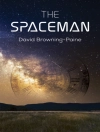In ‘The Poison Belt, ‘ Arthur Conan Doyle crafts a thrilling narrative that delves into existential themes and the fragility of human life. Set against the backdrop of a scientifically plausible disaster where the Earth passes through a deadly poison cloud, the novel employs a vivid, almost cinematic literary style. Doyle’s deft use of suspense and a gripping plot structure helps to encapsulate the anxiety of the early 20th century, reflecting the era’s fascination with science, discovery, and the unforeseen consequences of human progress. This speculative fiction piece thoughtfully explores not only the immediate physical dangers but also the psychological impact on civilization as it faces its potential extinction. Doyle, renowned for his creation of the master detective Sherlock Holmes, was heavily influenced by both his medical background and a keen interest in scientific advancements of his time. The tensions surrounding global events, including World War I, and the exploration of physics in the wake of Einstein’s theories likely informed his portrayal of disaster and human resilience. Through his rich understanding of human nature and his capacity for social commentary, Doyle invites readers to confront moral and philosophical questions about existence itself. Recommended for both aficionados of science fiction and students of literature, ‘The Poison Belt’ serves as a compelling exploration of humanity’s vulnerabilities and resilience. Doyle’s intricate plotting, character development, and insightful reflections on survival in the face of calamity make this a must-read for anyone intrigued by the intersection of science, philosophy, and human emotion.
About the author
Sir Arthur Conan Doyle (1859-1930) was a renowned British writer and medical doctor, most celebrated for his creation of the iconic detective Sherlock Holmes. Born in Edinburgh, Doyle pursued a medical degree at the University of Edinburgh, where he began writing short stories. Doyle’s literary prowess was not confined to detective fiction; his repertoire included science fiction, historical novels, plays, romances, and non-fiction. Among his forays into science fiction, ‘The Poison Belt’ stands out, published in 1913 as a sequel to ‘The Lost World’. It presents his protagonists facing a global catastrophe, showcasing Doyle’s ability to blend adventurous narratives with intellectual curiosity and a reflection on human frailty and resilience. Doyle’s writing style often embodied his keen sense of intrigue, his fascination with the unexplained, and an undercurrent of Victorian and Edwardian era values, which frequently manifested through themes involving the clash of science and spirituality. He was knighted in 1902 for his contributions to literature and the war effort. Doyle’s prolific career has left a lasting impact on literature, with his masterful storytelling and pioneering works in crime fiction influencing generations of readers and writers alike.












